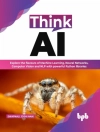Relatively new research ?elds such as ambient intelligence, intelligent envir- ments, ubiquitous computing, and wearable devices have emerged in recent years. These ?elds are related by a common theme: making use of novel technologies to enhance user experience by providing user-centric intelligent environments, – moving computers from the desktop and making computing available anywhere and anytime. It must be said that the concept of intelligent environments is not new and beganwithhomeautomation. Thechoiceofnameforthe?eldvariessomewhatfrom continent to continent in the English-speaking world. In general intelligent space is synonymous to intelligent environments or smart spaces of which smart homes is a sub?eld. In this collection, the terms intelligent environments and ambient int- ligence are used interchangeably throughout. Such environments are made possible by permeating living spaces with intelligent technology that enhances quality of life. In particular, advances in technologies such as miniaturized sensors, advances in communication and networking technology including high-bandwidth wireless devices and the reduction in power consumption have made possible the concept of intelligent environments. Environments such as a home, an of?ce, a shopping mall, and a travel port utilize data provided by users to adapt the environment to meet the user’s needs and improve human-machine interactions. The user information is gathered either via wearable devices or by pervasive sensors or a combination of both. Intelligent environments brings together a number of research ?elds from computer science, such as arti?cial intelligence, computer vision, machine learning, and robotics as well as engineering and architecture.
Inhaltsverzeichnis
Intelligent Environments: Methods, Algorithms and Applications.- A Pervasive Sensor System for Evidence-Based Nursing Care Support.- Anomalous Behavior Detection: Supporting Independent Living.- Sequential Pattern Mining for Cooking-Support Robot.- Robotic, Sensory and Problem-Solving Ingredients for the Future Home.- Ubiquitous Stereo Vision for Human Sensing.- Augmenting Professional Training, an Ambient Intelligence Approach.- Stereo Omnidirectional System (SOS) and Its Applications.- Video Analysis for Ambient Intelligence in Urban Environments.- From Monomodal to Multimodal: Affect Recognition Using Visual Modalities.- Importance of Vision in Human-Robot Communication Understanding Speech Using Robot Vision and Demonstrating Proper Actions to Human Vision.












